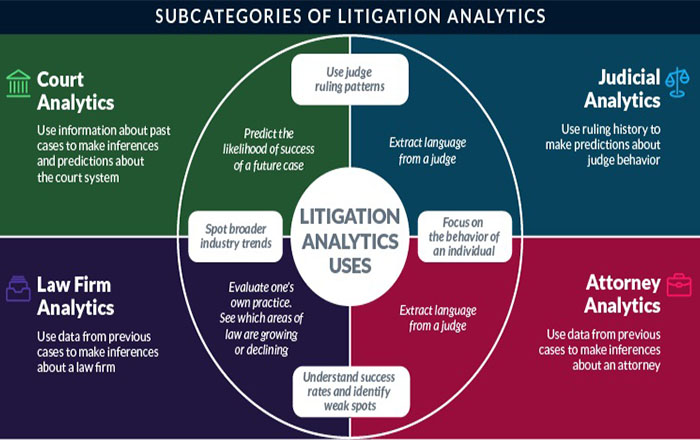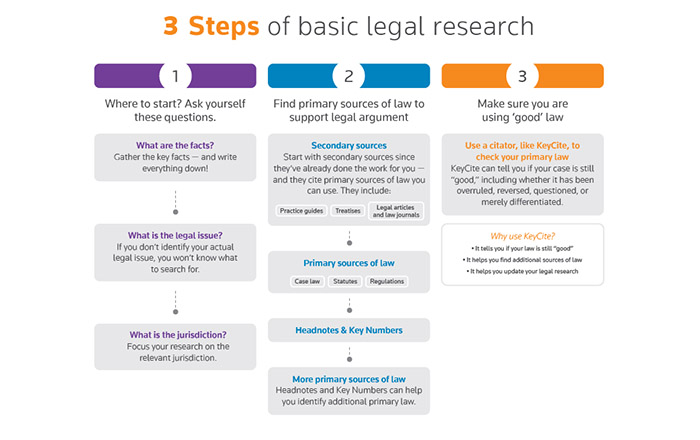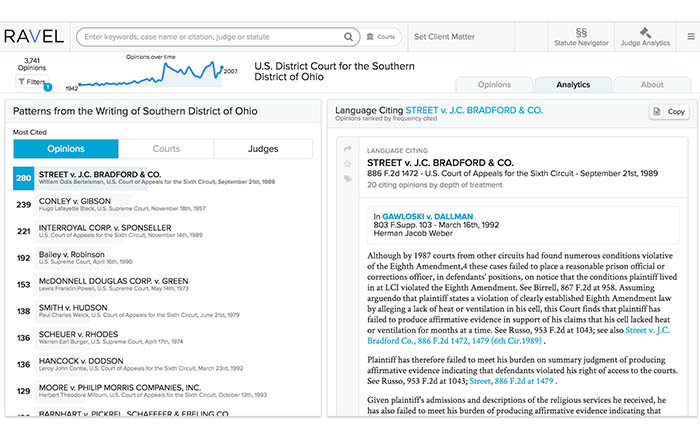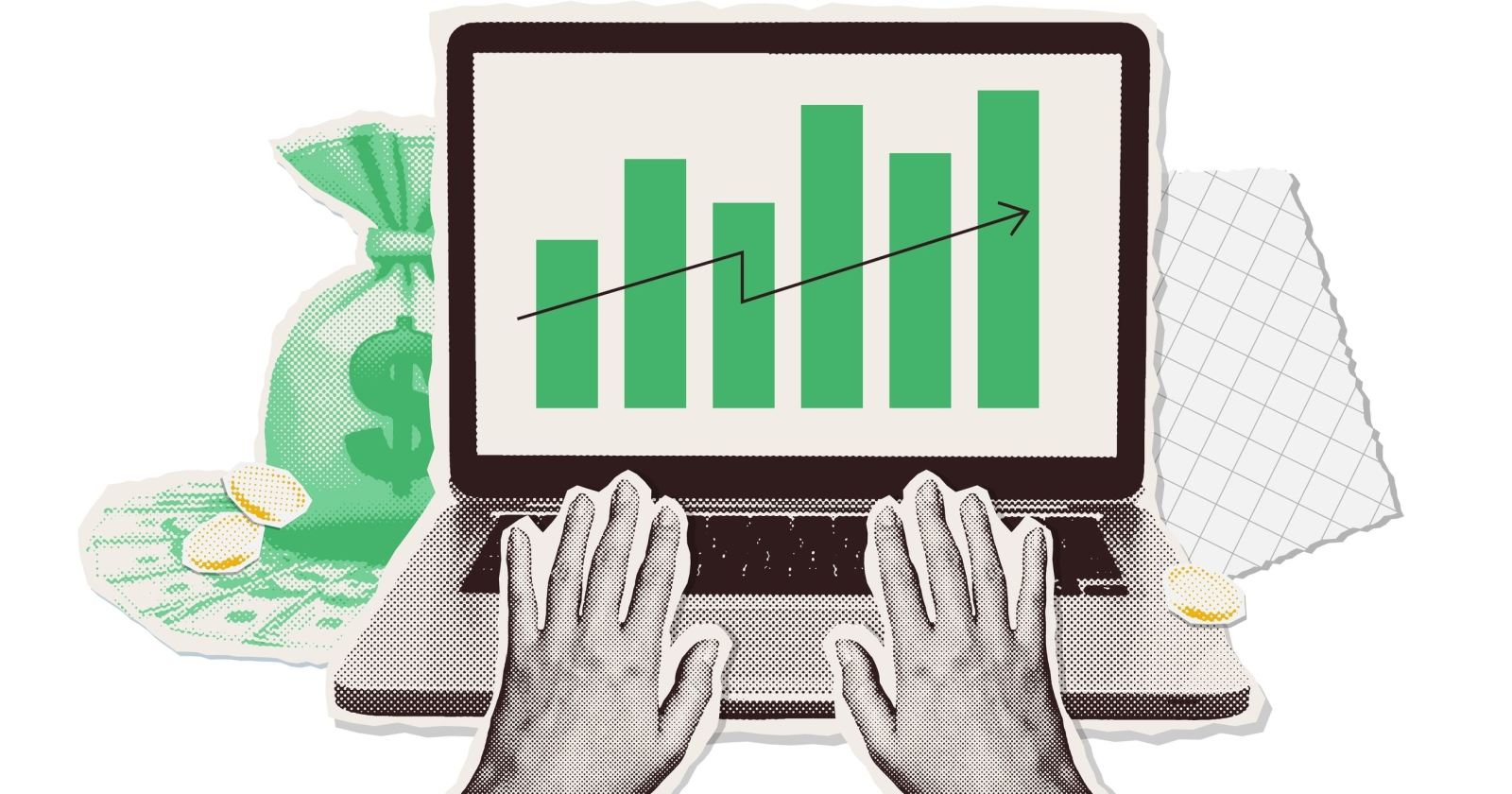Mastering Legal Briefs with the Power of AI Judicial Analytics
Through compelling and persuasive arguments, lawyers may be able to influence and shape court decisions. But ensuring briefs stand out […] The post Mastering Legal Briefs with the Power of AI Judicial Analytics appeared first on ReadWrite.

Through compelling and persuasive arguments, lawyers may be able to influence and shape court decisions. But ensuring briefs stand out requires a credible strategy – a complex feat for many defense attorneys.
Judicial analytics has emerged as an essential tool in assisting lawyers in composing powerful legal briefs with achievable outcomes ahead of arbitration or trial proposals.
This comprehensive guide introduces the key elements of judicial analytics, explains how it can help craft successful legal briefs, and outlines tips on selecting the best software tools for your cases.
Ultimately, incorporating judicial analytics can empower attorneys to make fact-based arguments better attuned to actual decision-making processes and yield reliable results that can incite positive change throughout courtroom settings.
Judicial Analytics

Judicial analytics allow attorneys to collect litigation data with a centralized platform. It offers various benefits by combining contextual information, analytics, and artificial intelligence.
These help lawyers gain insights on key decision-makers such as judges and juries by studying actual outcomes with this technique of legal AI.
With judicial analytics, lawyers can look for relevant patterns and valuable evidence in vast data sources from verdicts or much older archives, allowing them to anticipate rulings better or form more winning arguments for their briefs.
How data-driven insights can enhance legal strategies
Judicial analytics uses data-driven insights to gain a deeper understanding of judges’ past rulings and interpret them to maximize one’s legal strategy.
By gathering relevant court decisions, case law, and historical records, data analysts can build up a profile for each judge, which can be employed as a powerful tool.
Such deep current knowledge allows attorneys to tailor their arguments in line with the judges’ precedent opinions providing greater justification for scores or their considerations from both bench and bar, respectively, resulting in better outcomes.
Tools and platforms available for judicial analytics
Judicial analytics are tools and platforms used to organize, analyze, visualize, and interpret various datasets related to judges’ rulings.
They enable researchers to quickly make more informed decisions by identifying trends and articulating subtle differences in ruling among judges or court circuits.
The best judicial analytics tools collect massive amounts of data points from previous case files and Scopus legal documents to quickly generate tailored insights about case law.
Additionally, efficient information display techniques such as tables and chord diagrams can be utilized extend identify important principles more easily.
Researching Your Case with Judicial Analytics

Relevant case law and precedents
Identifying relevant case law and precedents is essential in researching a given case using judicial analytics. Armed with effective tools like legal databases, lawyers can identify precedents used by judges to decide similar cases, allowing them to anticipate potential outcomes and tailor their strategies accordingly.
Judicial decision analysis platforms also offer integrated visualizations that can assist users in gaining deeper insights from legal scholarship that aids them in structuring persuasive arguments.
By understanding the scope of research involving already published decisions related to particular issues, lawyers can double-down on preparing their best possible argument before entering the courtroom.
Judges’ past rulings and tendencies
Analyzing judges’ past rulings and tendencies is significant when researching a case using judicial analytics.
Various analytical tools can be used to examine the decision records of legal professionals, such as prior cases presided over by a judge, transcripts or summaries of similar disputes, behaviors observed in the courtroom, guidance issued in written opinions, and other readily accessible materials.
Outcomes from this type of research produce valuable findings, including informed arguments supported with examples, nuanced understanding to shape discovery questions focused on specific subject matters, and strategies tailored to hypothetical situations taken into account during evidence visualizations.
Patterns and trends in court decisions
When researching your case, judicial analytics are valuable for catching patterns or trends in court decision-making.
Leveraging quantitative methods and powerful algorithms is one of the most effective ways to gain legal insights from large data sets, such as those generated by legal briefs and court hearings.
By combing through previously decided cases to identify any similarities in decisions made by certain judges, geographic areas, or other factors, lawyers can comprehensively understand their chances of success in future litigation.
Such discoveries will help craft persuasive Legal Briefs tailored to maximize the effect on favorable ruling outcomes.
Crafting a Persuasive Legal Brief
Structuring your brief for clarity and impact
To ensure maximum impact when crafting a legal brief for trial, lawyers must structure their arguments to clearly communicate the desired outcome and engage the reader from beginning to end.
This is where judicial analytics can be invaluable: leverage data-driven insights to identify patterns and nuances in court opinions and individual judges’ past rulings and tendencies, which should inform how you structure your brief.
Objectives should be unified under focused themes, while generous use of visuals (such as charts or tables) can strengthen quantitative points to create an aesthetic but informative presentation.
In addition, it pays off to systematically organize your facts arrayed against the applicable law before arriving at specific requests or recommendations since additional details provide context without overwhelming readers. Good briefs will also aim to persuade through emotional appeals that relate ideas to our shared legal beliefs or values.
Leveraging judicial analytics to tailor your arguments
Crafting a persuasive legal brief begins with data-driven insights. With judicial analytics, lawyers can tailor their arguments to capture each judge’s tendencies and align with factual evidence and precedents.
For example, attorneys can analyze case actions of judges to gather information on how these individuals respond to different types of legal arguments. By leveraging this data, you can craft your argument in a way that appeals more effectively to the opinion of that specific judge.
Judicial analytics is also key for incorporating logic and statistics into your brief to present an academically sound and unified point of view.
A contextualized approach delivers clear credibility that the court will perceive positively – ultimately giving you an edge in court litigation matters or successful settlement negotiations.
Incorporating data and statistics to bolster your position
Incorporating data and statistics when crafting persuasive briefs has become increasingly important to substantiate a solid legal argument.
Statistical evidence can be used to reveal correlations between people or events, illustrate patterns of behavior, and establish areas in which there are disproportional effects.
With the aid of judicial analytics software, this research process is made much easier; analyzing databases of large court decisions draws out useful information on various issues with more accuracy than manual means alone.
As such, the backup for your case will be visible and easier to read. Good use of statistical evidence strengthens one’s narrative for juries and judges who advocate logic-driven grounds for rulings.
Gaining a Competitive Edge

Judicial analytics to anticipate opposing counsel’s arguments
Judicial analytics can be a powerful tool to help attorneys gain a competitive edge. By examining classes of data such as staffing trends of opposing counsel and frequencies of their basic arguments, attorneys can get an idea of what type of legal strategies will be used by the other side months or even years in advance.
Lawyers may use this insight on topics including settlement negotiation tactics and jury selection options for cases involving similar topics. Moreover, lawyers can contribute statistical evidence from research gathered with judicial analytics tools when crafting persuasive legal briefs.
Thus, it is important that practitioners remain up-to-date on ongoing technological changes and seek out digital help for greater accuracy with anticipating opposing counsel’s intended arguments.
Negotiation and settlement strategies
Using judicial analytics in tandem with traditional legal research can give attorneys a substantial competitive edge, and particularly benefit negotiations and settlement strategies.
For example, data-driven insights can identify judges’ biases towards certain types of defendants or outcomes which may prove advantageous to lawyers during discrete negotiation phases and settlements.
Furthermore, accessing detailed information regarding average judgments in analogous matters greatly contributes to critical decision-making prior to reinforcing positions at the mediation table.
Ultimately judicial analytics significantly bolster attorneys’ abilities to better prepare for arbitration and secure desirable settlements on behalf of clients.
Courtroom dynamics with data-backed insights
Preparing for the courtroom is as critical as preparing a legal brief. Knowing ahead of time what an opposing counsel will argue, possible ways in which to counterargument those thoughts, and potential perspectives from the judge can give any lawyer a tactical advantage.
Judicial analytics allow lawyers to gain insight into judges’ past rulings, tendencies & patterns when making decisions backed by data and statistics, thereby allowing them to better prepare for courtroom dynamics when trying a case.
Using these insights within briefs or during planning meetings helps lawyers adjust strategies accordingly. Ultimately, advancements in judicial analytics promise improved accuracy & effectiveness of litigation proceedings, thereby providing a competitive edge essential for success.
Conclusion
Judicial analytics has the power to revolutionize legal brief writing in litigation. Through smart use and understanding of data-driven trends, lawyers can gain an invaluable advantage when assessing cases and developing strategies.
By mastering these tools to provide further insight into various case law precedents and a judge’s individual ruling habits, lawyers can craft targeted and insightful legal briefs for clients that are far more likely to affect positive outcomes in courtrooms.
Use the concept of judicial analytics proactively in your practice, and you will undoubtedly learn how to improve both your negotiation and litigation practices.
Featured Image Credit: Provided by the Author; Unsplash; Thank you!
Timothy Carter
Chief Revenue Officer
Timothy Carter is the Chief Revenue Officer of the Seattle digital marketing agency SEO.co, DEV.co & Law.co. He has spent more than 20 years in the world of SEO and digital marketing leading, building and scaling sales operations, helping companies increase revenue efficiency and drive growth from websites and sales teams. When he's not working, Tim enjoys playing a few rounds of disc golf, running, and spending time with his wife and family on the beach -- preferably in Hawaii with a cup of Kona coffee. Follow him on Twitter @TimothyCarter

 Aliver
Aliver 
































